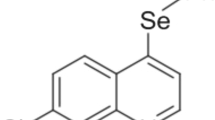We examined conditioned reflex activity (an active avoidance reflex in a shuttle chamber) in 24-monthold rats against the background of the action of N-acetylcysteine (N-AcC) introduced perorally during 18 days. N-AcC improved the cognitive functions in old animals; rats better evaluated the experimental task, and the latencies of the reaction to unconditioned stimulation were shorter. This, in general, promoted training for the reflex as compared with that in control rats. Considering that N-AcC inhibits the activity of neutral sphingomyelinase (SMase) and normalizes the content of ceramides in the hippocampus and neocortex of 24-month-old animals, it can be supposed that suppression of hyperproduction of ceramides in the brain of rats is an important factor providing improvement of the cognitive functions in old rats; this effect is realized due to inhibition of activity of neutral SMase.
Similar content being viewed by others
References
N. A. Babenko and E. G. Shakhova, “Long-term food restriction prevents aging-associated sphingolipid turnover dysregulation in the brain,” Arch. Gerontol. Geriatr., 2013. http://dx.doi.org/10.1016/j. archger.2013.12.005.
D. A. Butterfield and C. B. Pocernich, “The glutamatergic system and Alzheimer’s disease: therapeutic implications,” CNS Drugs, 17, No. 9, 641-652 (2003).
C. Adamy, P. Mulder, L. Khouzami, et al., “Neutral sphingomyelinase inhibition participates to the benefits of N-acetylcysteine treatment in post-myocardial infarction failing heart rats,” J. Mol. Cell. Cardiol., 43, No. 3, 44-53 (2007).
C. Achat-Mendes, K. L. Anderson, and Y. Itzhak, “Impairment in consolidation of learned place preference following dopaminergic neurotoxicity in mice is ameliorated by N-acetylcysteine but not D1 and D2 dopamine receptor agonists,” Neuropsychopharmacology, 32, No. 3, 531-541 (2007).
J. Bureš, O. Burešova, and J. P. Huston, Techniques and Basic Experiments for the Study of Brain and Behavior [Russian translation], Vysshaya Shkola, Moscow (1991).
S.S. Kamboj, K. Chopra, and R. Sandhir, “Neuroprotective effect of N-acetylcysteine in the development of diabetic encephalopathy in streptozotocin-induced diabetes,” Metab. Brain. Dis., 23, No. 4, 427-443 (2008).
J. F. Gonçalves, A. M. Fiorenza, and R. M. Spanevello, et al., “N-acetylcysteine prevents memory deficits, the decrease in acetylcholinesterase activity and oxidative stress in rats exposed to cadmium,” Chem. Biol. Interact., 186, No. 1, 53-60 (2010).
S. Yoshimura, Y. Banno, and S. Nakashima, et al., “Inhibition of neutral sphingomyelinase activation and ceramide formation by glutathione in hypoxic PC12 cell death,” J. Neurochem., 73, No. 2, 675-683 (1999).
Author information
Authors and Affiliations
Corresponding author
Rights and permissions
About this article
Cite this article
Babenko, N.A., Shakhova, O.G. Effect of an Inhibitor of Sphingomyelinases, N-Acetylcysteine, on Cognitive Functions in Old Rats. Neurophysiology 46, 180–182 (2014). https://doi.org/10.1007/s11062-014-9426-5
Received:
Published:
Issue Date:
DOI: https://doi.org/10.1007/s11062-014-9426-5



